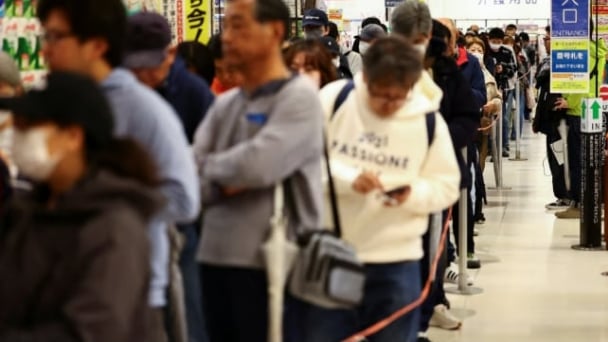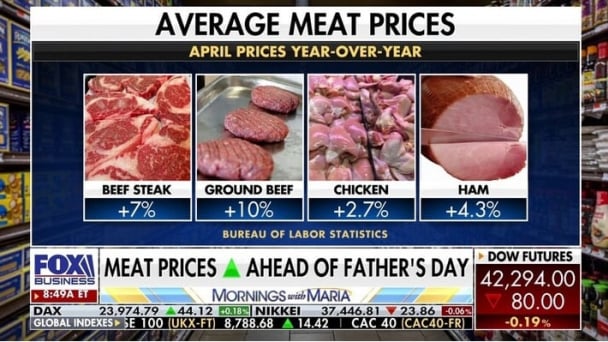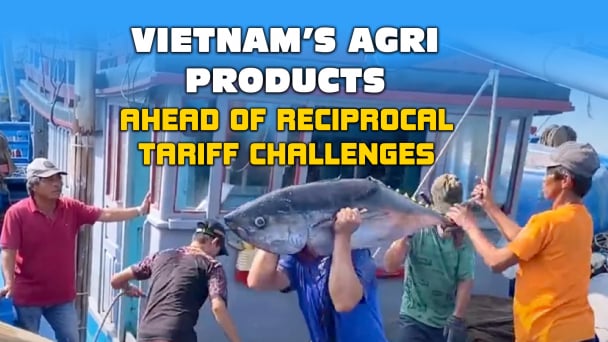June 5, 2025 | 18:56 GMT +7
June 5, 2025 | 18:56 GMT +7
Hotline: 0913.378.918
June 5, 2025 | 18:56 GMT +7
Hotline: 0913.378.918

Currently, many Vietnam’s agricultural and aquatic products have become popular and have a foothold in the New Zealand’s market. Vietnam is the leading supplier (claiming the first or the second place in the market) for a number of goods, such as cashew nuts (96%), pepper (65%), basa fish fillet (100%), frozen shrimp (27%).
Regarding seafood (HS code 03), in 2020, Vietnam's seafood export turnover to this market reached NZD 16.6 million, accounting for 9% of the market share, ranking fourth after China, Norway and Australia.
The turnover and market share of some specific products are as follows: Frozen basa fish fillet (HS code 030462) reached NZD 1.76 million, accounting for 100% of the market share; frozen shrimp (HS code 030617) reached NZD 12.1 million, accounting for 27% of the market share; other frozen fish fillets (HS code 030489), reached NZD 1.1 million, accounting for 17% of the market share; processed and preserved caviar (HS code 1604), reached NZD 2.1 million, accounting for 2% of the market share; shrimp, crab and squid products (HS code 1605), reached NZD 6 million, accounting for 16% of the market share.
Regarding agricultural products, cashew nuts occupy the absolute No 1 position with turnover of nearly NZD 27 million, accounting for 96% of the market share in 2020. For coffee, pepper and tea (HS code 09) reached NZD 7.9 million, accounting for 4% of the market share, of which whole pepper (HS code 090411) reached NZD 1 million, accounting for 65% of the market share, minced pepper (HS code 090412) reached NZD 2 million, accounting for 60% of the market share; unroasted coffee (HS code 090111) reached NZD 3.6 million, accounting for 5% of the market share.
Regarding vegetables and tubers (HS code 07) reached the turnover of NZD 1.8 million, accounting for 2% of the market share in 2020, of which frozen vegetables (HS code 0710) reached NZD 1.3 million, accounting for 5% of the market share; tapioca starch (HS code 0714) reached NZD 395,000, accounting for 2% of the market share.
Regarding rice (HS code 1006) reached the turnover of NZD 9 million in 2020, accounting for 9% of the market share, of which mainly is milled rice (HS code 100630), with the turnover of NZD 8.25 million, accounting for 9% of the market share.

Bag of fresh bamboo shoot sold in New Zealand
Vietnam’s foods and processed foodstuffs are distributed in New Zealand through importers, wholesalers and retailers.
Due to the small size of the market, big importers in New Zealand are also the distributers and their customers being secondary wholesalers, chains of retailing supermarket, retail stores and restaurants. Some importers, distributers have the dominant market share of products, such as:
Distributers of foodstuffs, spices, canned dry foods are Davis Trading, Gilmours Wholesale Food, with stores operating like Cash’nCarry model and 2 major partners of Foodstuffs - Toops and Trents. Regarding spices and cocoa, that is Sherratt Ingredients.
There are Shore Mariner and King Fisher in the distribution system of frozen seafood.
There are Lim Brothers Import & Export, Soung Yueen, Tai Ping in the distribution system of Asian foodstuffs. Vietnam’s agricultural products, foodstuffs and foods are imported and distributed by these enterprises.
It is estimated that the importers and wholesalers import up to 80% of the goods while the retailers import 20% left. Some wholesalers are also importers, distributers of domestic products, such as King Fisher distributes 90% of domestic products and imports only 10%.
The New Zealand Trade Commission has prepared a report on the retail sector, and based on the data showing corporations’ super profitable, partly causing New Zealand's food prices are the most expensive in the OECD.
In the food industry, supermarkets and retail stores account for 30% of the goods distributed, the rest is of food service chains, restaurants, hotels, fast food chains, etc.
Most importers, distributers work directly with foreign exporters; some work with parent companies or trade agents in third country like Australia, Singapore, Hong Kong (China), Malaysia, etc.
Regarding frozen or specially preserved goods, the importers and distributers hold the leading role and do all the logistics activities to transport goods to supermarkets, retail stores or restaurants.
The importers and distributers also do the packaging and attaching their brands on dry goods and foodstuffs imported in large batches but repackaged in smaller size for retail. Goods from warehouses of importers and distributers are transported directly to supermarkets and retail stores based on planneddistribution.
Woolworths New Zealand and Foodstuffs are two corporations that monopolize the foodstuffs supermarket sector in New Zealand. The size of the agriculture products and food market of New Zealand is US$ 22 billion, of which the above two corporations hold 90% of the market share.
Families in New Zealand spend an average amount of US$ 234 a week. Around 3 million households shop at Countdown store chain and 3.3 million other households shop at Foodstuffs store chain every week.
Woolworths, based in Auckland, owns and operates more than 180 supermarkets with brand named Countdown and a chain of 60 convenience stores with brand named Super Value and Fresh Choice nationwide.
Foodstuffs, based in both North Island and South Island, owns over 700 supermarkets, stores with diversity bands named New World, PAK’nSAVE, Four Square, On the Spot, Liquorland, Henry’s Beer Wines & Spirits, Raeward Fresh, etc.
Goods to be distributed to supermarkets must be approved by headquarters of both two corporations (in some case, decisions of Woolworths are governed by mother company in Australia). In 2019, Vietnam’s organic rice and rice paper products were accepted on shelves of Foodstuffs in North Island. Other products are regularly on shelves of Foodstuffs like cashew nuts, frozen shrimp, dragon fruit.
Translated by Gia Loc

(VAN) Stores have started selling rice from the government’s stockpile to feed demand for the staple.

(VAN) Omaha Steaks CEO says rebuilding cattle herds will take about a year to ease price pressures.

(VAN) Reciprocal tariffs and recent NOAA rulings are presenting substantial obstacles for Vietnamese tuna exporters in the U.S. market. As a result, the industry is actively seeking alternative export destinations.

(VAN) Although the U.S. holds a small share of Vietnam’s rubber exports, newly imposed reciprocal tariffs are expected to impact the sector. Vietnamese enterprises must optimize the use of significant markets and free trade agreements.

(VAN) Vietnam's pepper industry is looking forward to the final tariff decision in order to sustain its robust presence in the United States, the country's biggest pepper market.

(VAN) The U.S. is the largest market for Vietnamese cashew nuts. However, when exports to the U.S. encounter difficulties due to reciprocal tariffs, Vietnamese cashews still have many other potential markets.

(VAN) Reciprocal tariffs present a significant obstacle to Vietnam's wood exports to the United States; however, domestic wood businesses are endeavoring to preserve their market share in this critical market.